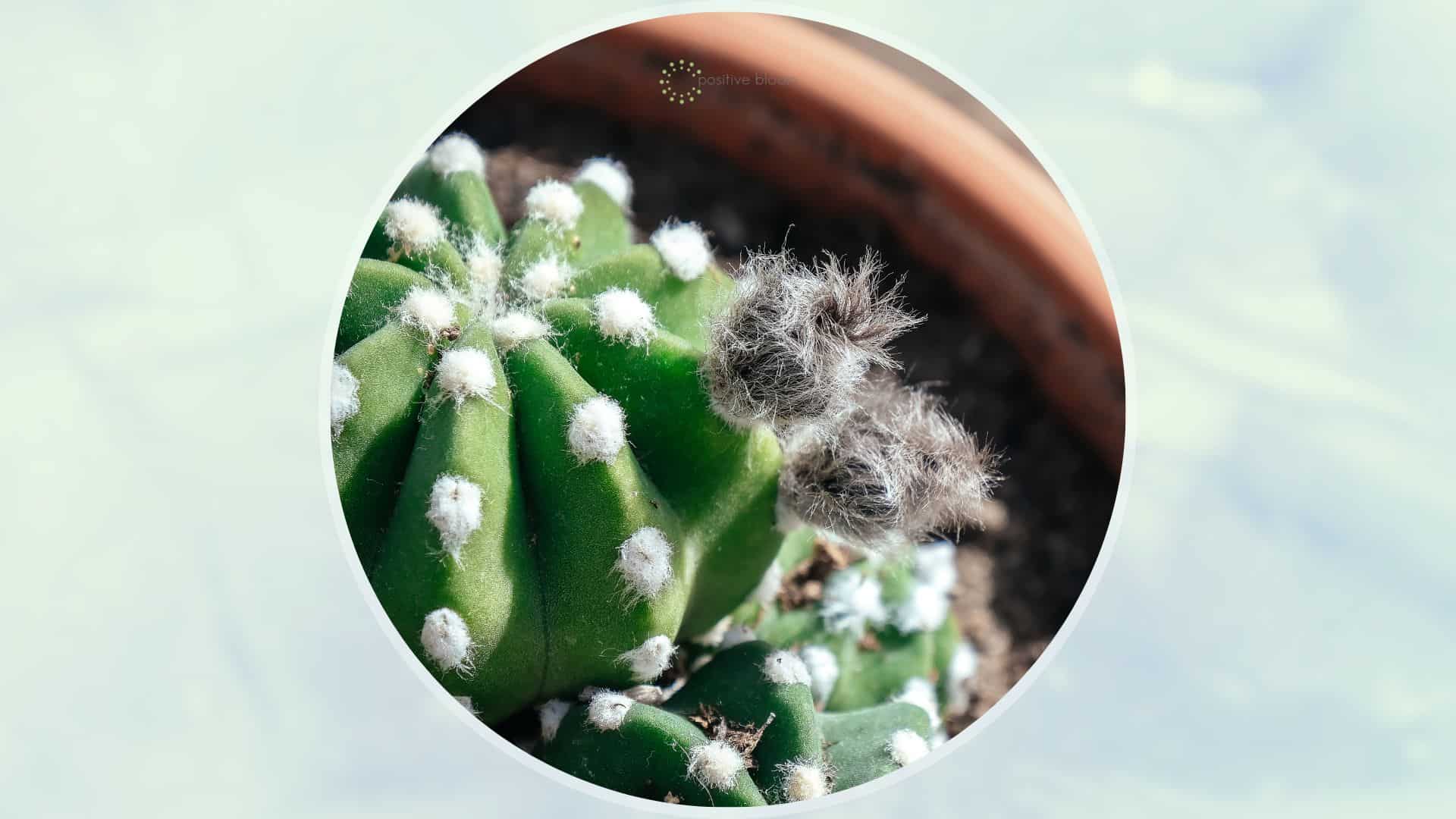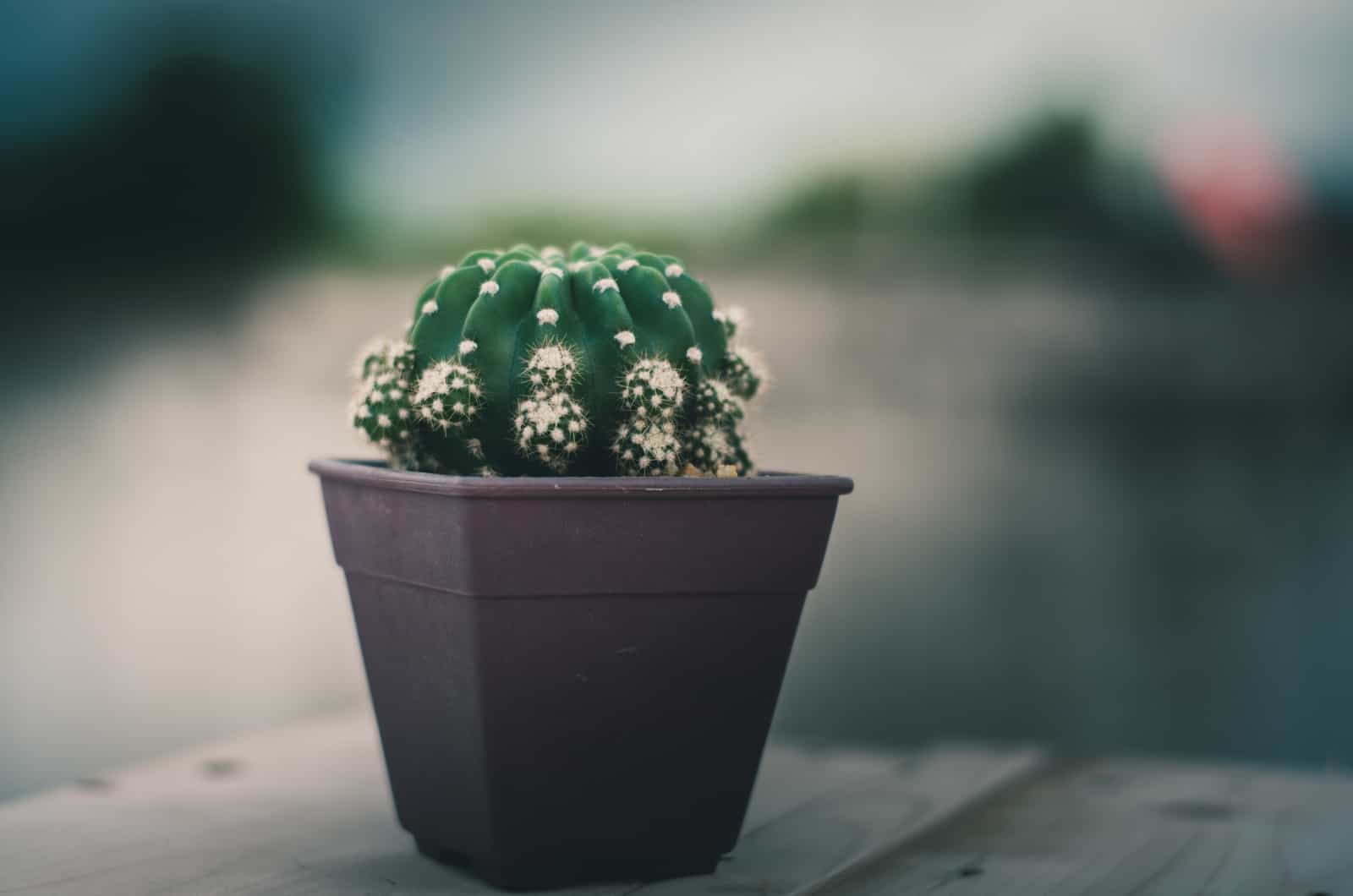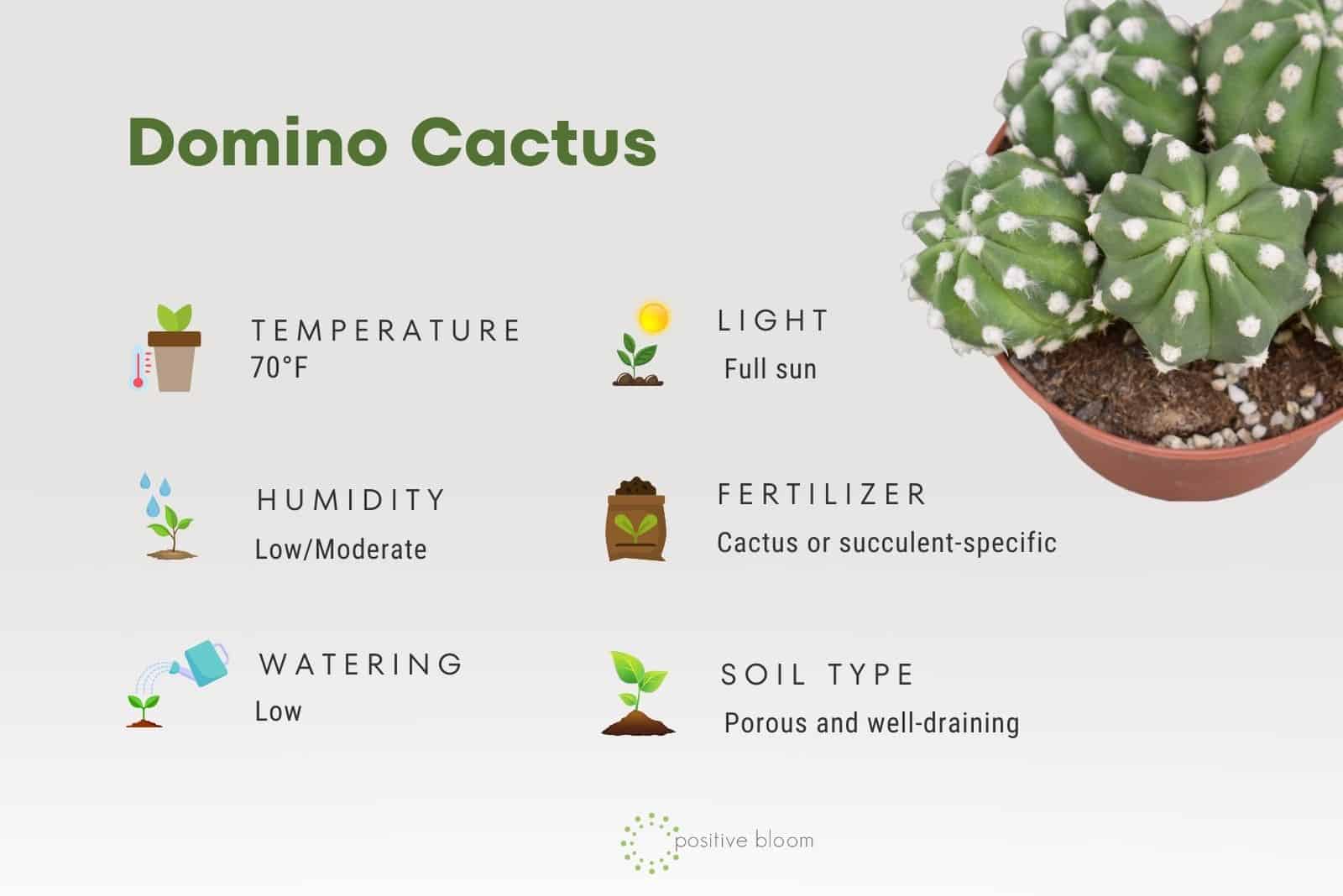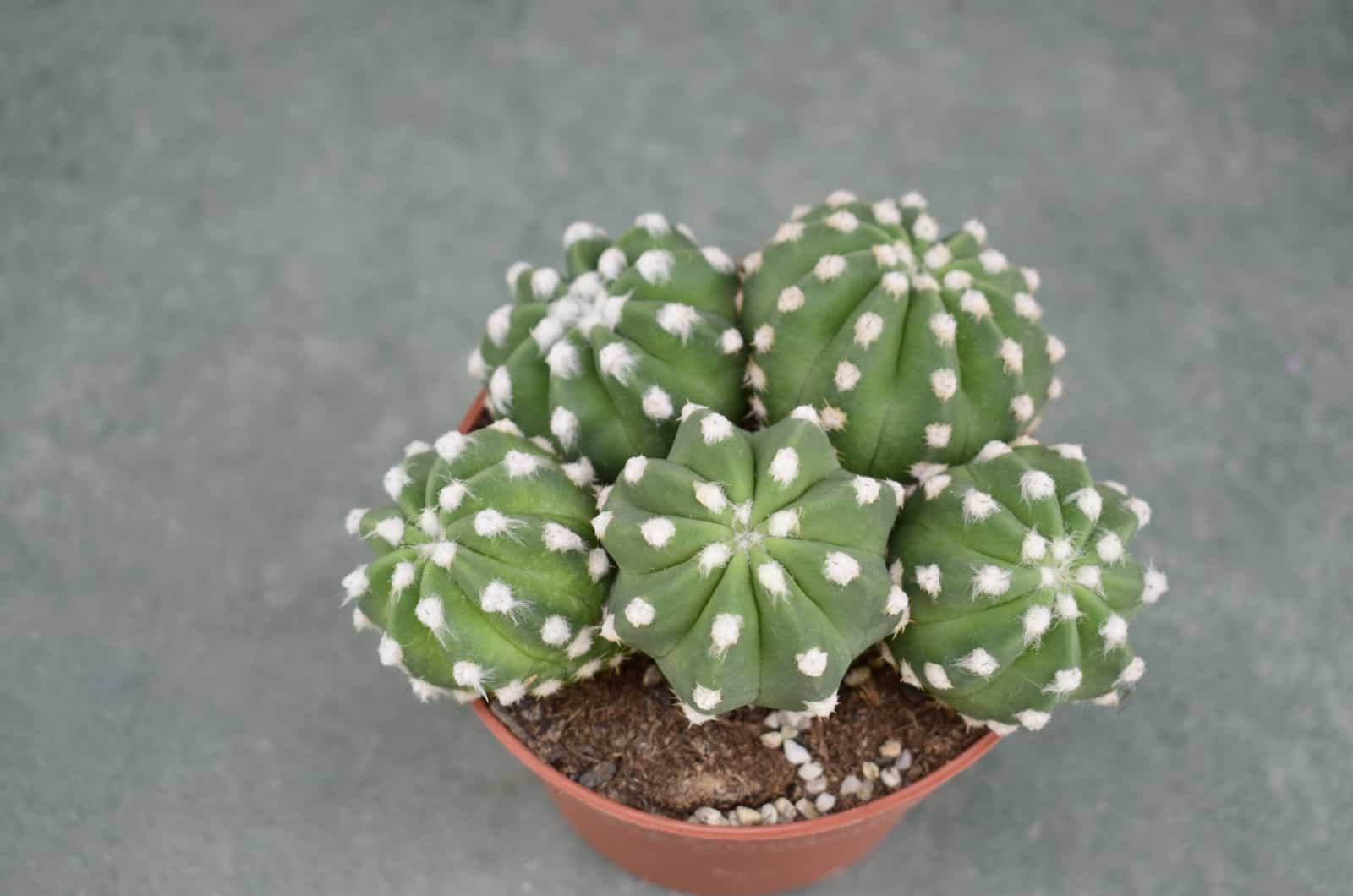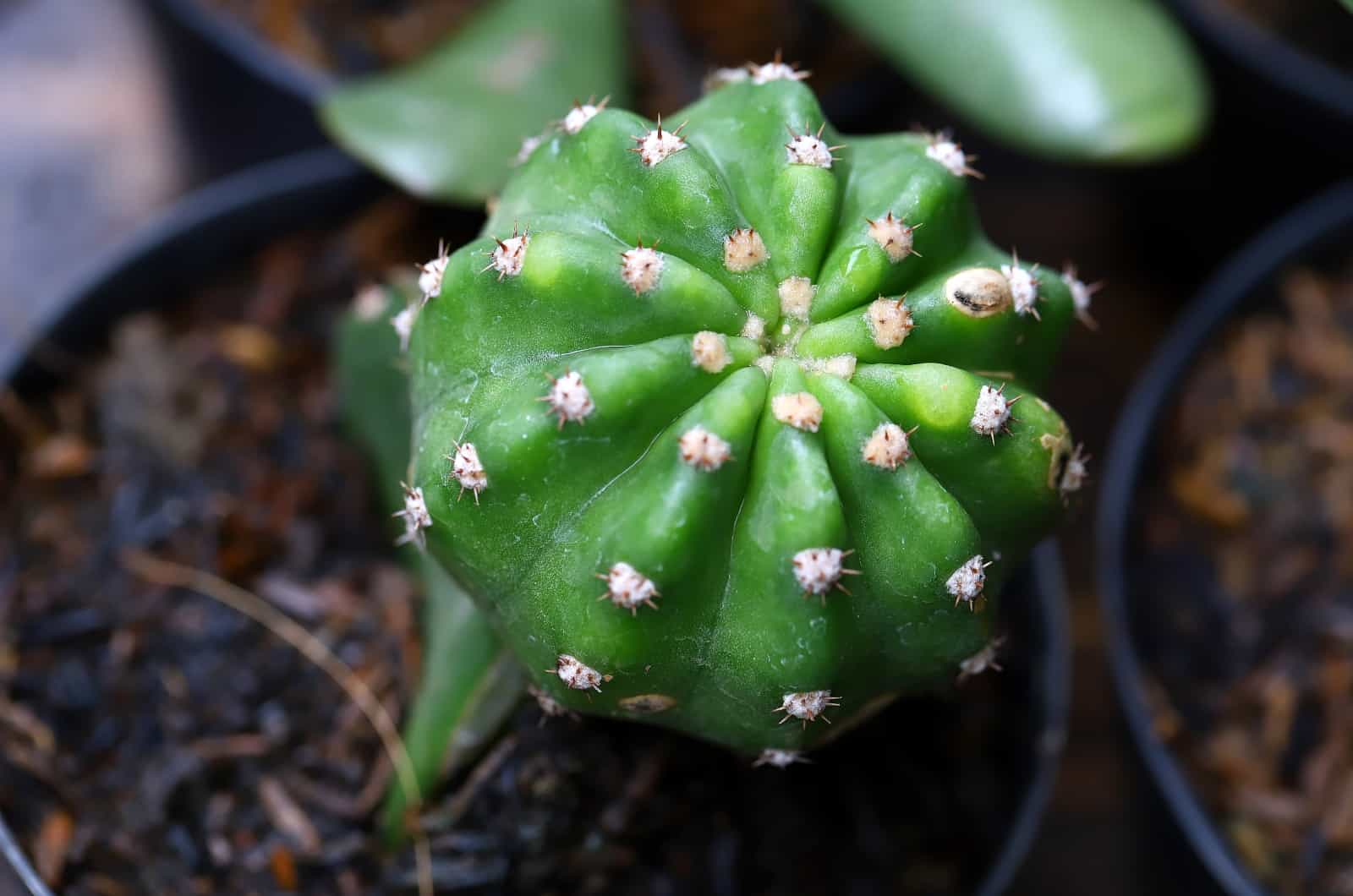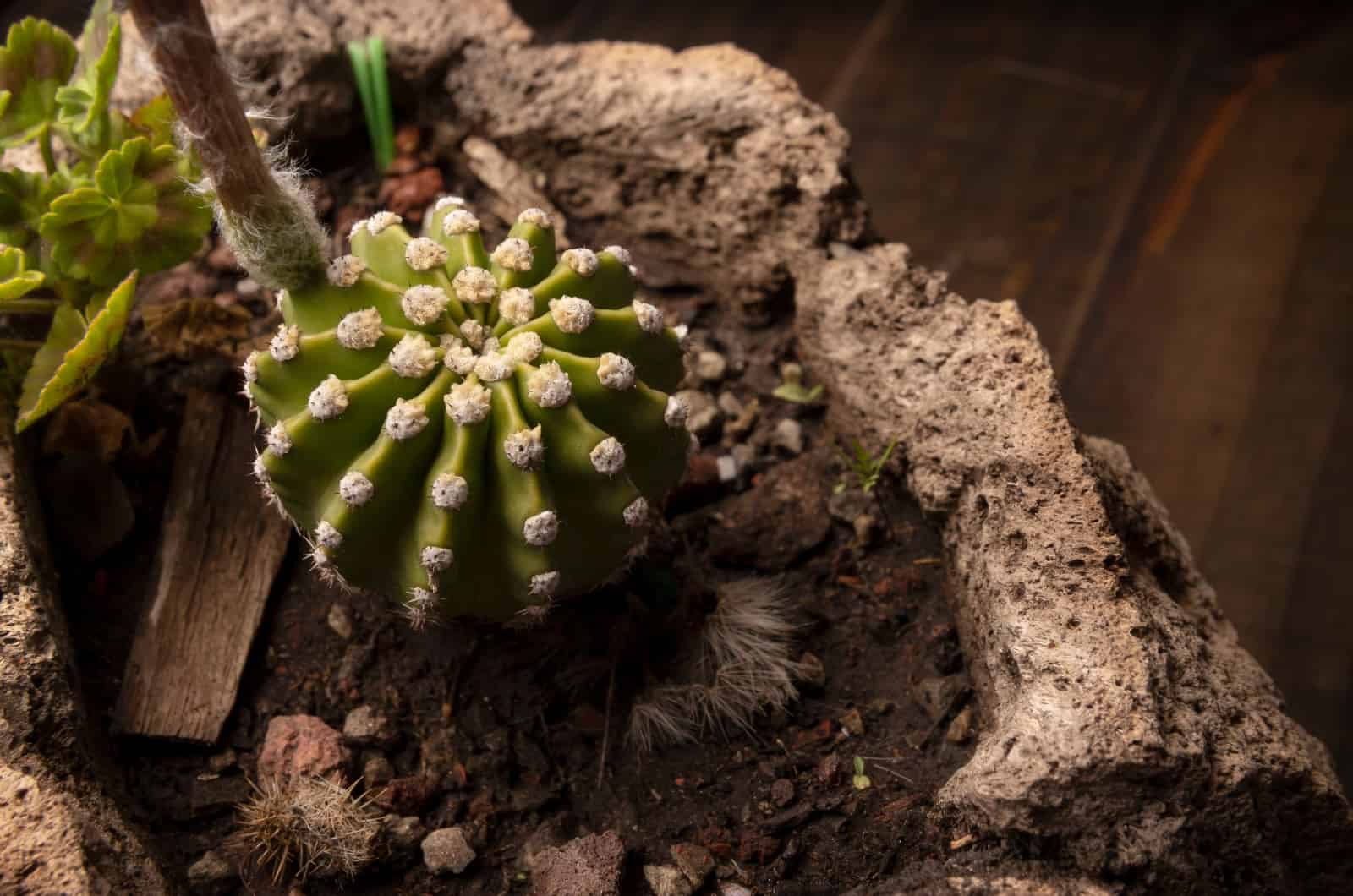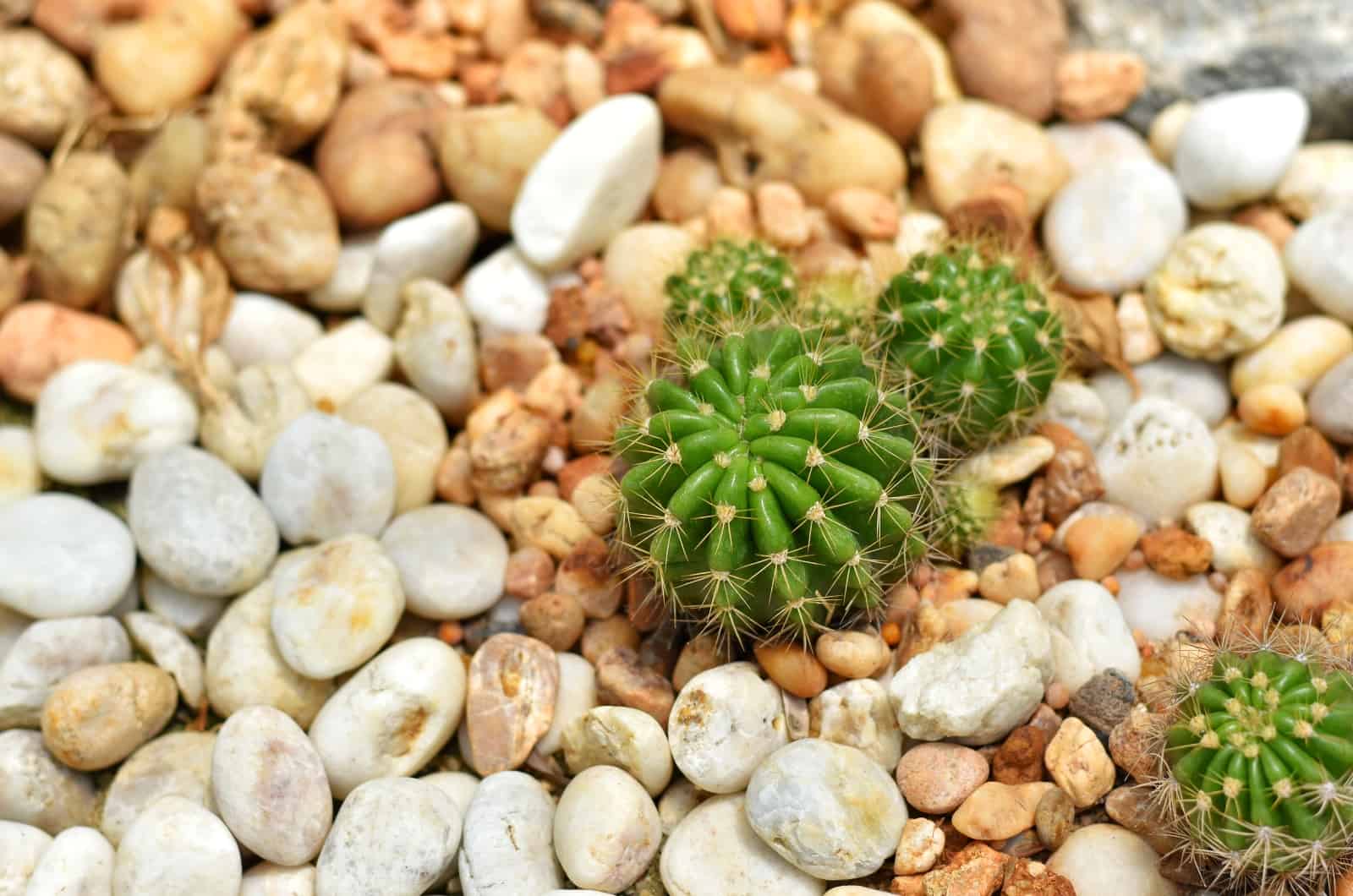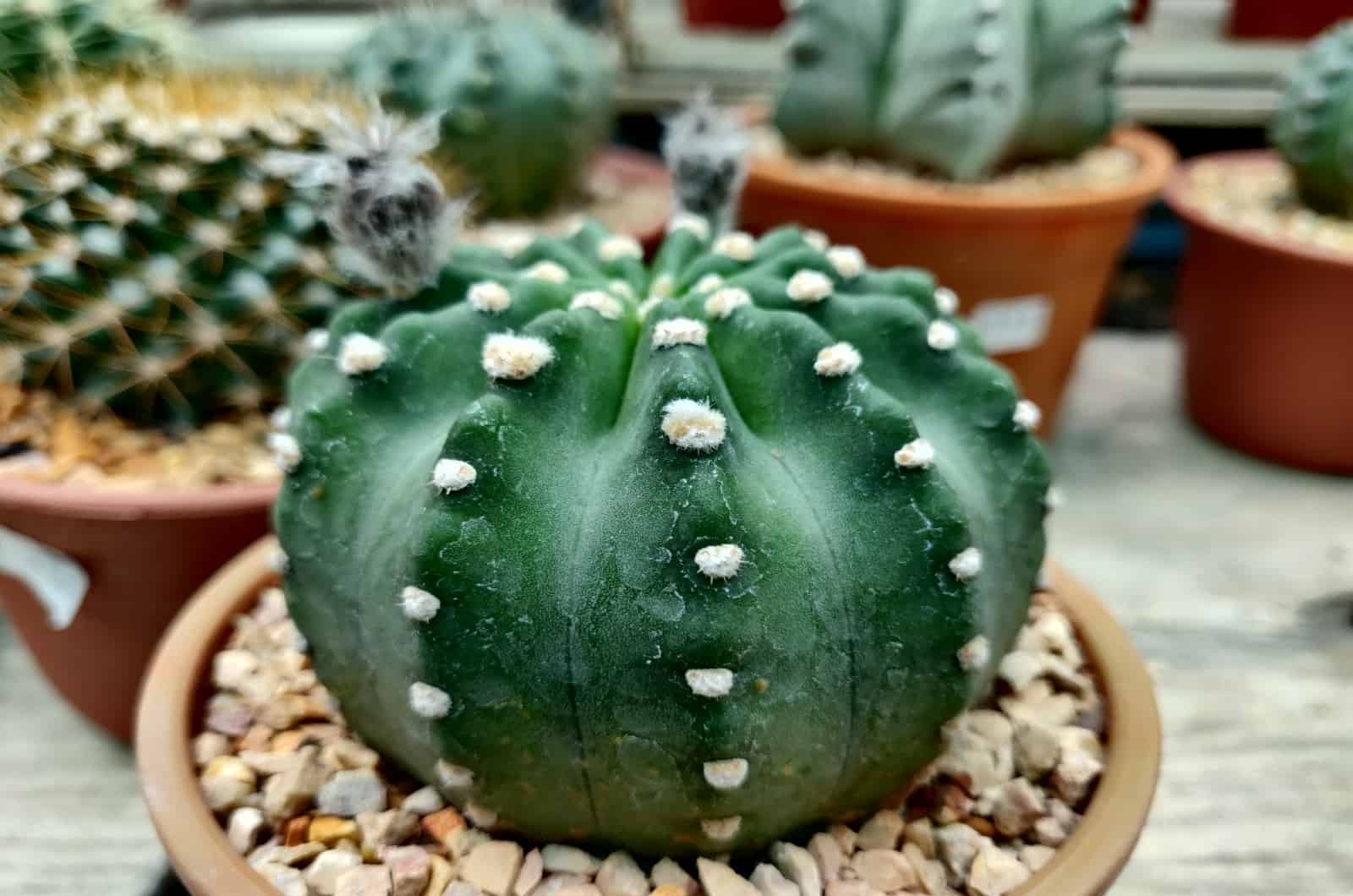If you are looking for a plant that you can put on a table or narrow windowsill, you should definitely consider some dwarf cacti varieties. One of the cutest ones is definitely the Domino cactus, otherwise known as the Night Blooming Hedgehog or the Easter Lily cactus.
This lovely, tiny cactus originates from Paraguay and Bolivia, but you can find it almost anywhere these days!
It is a small, globular cactus with a few spikes and large white flowers attached to it. These flowers protrude from the cactus because they have long green stems. If you love cacti and flowers, then this is the right plant for you.
We will talk more about the common features and how to take care of it in this article, so be sure to keep reading!
[table id=661 /]
Domino Cactus: Common Features
The Echinopsis subdenudata, otherwise known as the Domino cactus, belongs to the Cactacaeae family. This is a dwarf cactus that grows about 2 to 4 inches tall. If it is grown outdoors, it can reach up to 12 inches tall.
However, it does produce taller flowers that protrude from the main plant. Their stems can grow from 5 to 9 inches long. The lovely white flowers truly make this plant even more enticing, and you can expect them to bloom between spring and summer.
Although you might not end up with delicious fruit like those that the Blue myrtle cactus produces, you will still get rewarded by beautiful flowers.
In addition to aesthetics, these flowers also have an amazing fragrance – the scent can be described as a combination of lilies and jasmine.
This cactus is round with a deep green body and white wooly spine clusters all over it, which makes it look like a domino – hence the name!
Instead of dry deserts, these cacti plants are found in the mountainous regions of Bolivia and Paraguay. Nonetheless, they can easily be grown indoors.
Domino Cactus: Plant Care
Cacti are generally low-maintenance plants. They’re perfect for all beginner gardeners out there!
All you have to do is make sure that they are nice and warm, give them water from time to time, and put them somewhere where they can get plenty of sunlight.
These plants can grow perfectly fine in USDA hardiness zones 9 to 10b, though I would suggest you grow them indoors if you live in a region with colder temperatures.
Let’s talk about plant care in more detail.
Water Requirements
Water requirements are relatively easy to determine for cacti plants. However, this is not a regular cactus plant – they don’t grow naturally in desert regions, which is why their water requirements might differ from other cactus plants.
Determining how often to water a cactus indoors can be tricky because different factors have to be taken into consideration, such as humidity levels, temperature, and even the cactus pot.
Ideally, you should water the plant once the soil completely dries out. It will require more water during the summer, but once the winter season approaches, your cactus will enter dormancy. This means that it won’t be actively growing, so it basically needs little to no watering.
Another tell-tale sign that your Domino plant needs watering are the vertical ribs on the cactus body starting to look a little sharper and more apparent.
Avoid watering the cactus body because it might cause rotting. If you water it by accident, just make sure that there is enough airflow for the water to evaporate.
I usually water my Easter Lily cactus (the other cactus variety) once a week in the summer, but this is because the temperatures are higher, which leads to quicker evaporation.
Soil Requirements
Soil requirements for this cactus are the same as for regular cacti – it needs soil that drains quickly. Therefore, the soil for this Domino cactus needs to be well-draining and aerated. The best potting soil for cacti has a lot of coarse material and is quick-draining.
The best type of soil would be loam, but you can also use sandy soils.
To avoid making a mess, you can purchase cactus soil from a garden center, or you can make your own by combining equal parts sand, horticultural grit, and loam compost or potting soil. You can even combine the soil 50:50 with perlite or pumice.
In order to promote the best absorption of moisture and nutrients, you also need to make sure that the pH is neutral or slightly acidic (between 6.0 and 7.0).
Light Requirements
The light requirements are also similar to any other cactus plant. They all love a lot of sunshine!
The Domino cactus should have at least 6 hours of sunlight each day, though they can tolerate some partial shade. However, if you are dealing with a young cactus plant I would suggest that you keep it in indirect sunlight at the beginning.
You can keep it near a south-facing window. If you keep the plant outside and the summer gets really hot, I would recommend providing some shade for your cactus or it might get sunburnt.
The cactus plant might start turning black if you keep it in low light settings for too long. In case you can’t find a perfect spot for your little cactus, then you should get some grow lights!
Temperature Requirements
This cactus variety likes warmer temperatures (surprise, surprise!). It thrives in temperatures around 70 degrees Fahrenheit. However, this lovely cactus can tolerate temperatures as low as 50 degrees Fahrenheit!
These little cuties cannot withstand freezing temperatures, so make sure to keep them inside during the winter months.
You should also keep the plant away from cold drafts such as vents or air conditioners, and also from other heat sources such as radiators or fire places.
Humidity Requirements
The good news is that you don’t need to use a humidifier or sprayer to keep your cactus happy and healthy. This is because the domino plant can handle low and moderate humidity.
Although this plant can survive relative air moisture levels as high as 50%, optimal household humidity levels range between 30% and 40%.
Fertilizer Requirements
You should fertilize this cactus a few times during its growing season to assist its growth and development.
Use cactus and succulent-specific plant food two to three times each year (or more if indicated on the packaging).
Finding a fertilizer with slightly higher potassium levels may help you get more flowers because potassium can encourage flower production.
Don’t apply too much fertilizer because it might build up in the soil and prevent the roots from absorbing nutrients and water. This might lead to stunted growth of a plant that is already a slow grower.
Repotting
Since it is not a fast-growing plant, you won’t have to worry about repotting it every season. Repotting is necessary when the plant has outgrown its current pot. This cactus is best transplanted in the spring so that it has enough time to recover from transplant shock before going into dormancy.
Additionally, you ought to pick out the ideal cactus container. It would be best to use slightly larger terracotta pots with drainage holes because they are ideal for draining excess water.
Set your beautiful cactus in the planter and cover its roots with extra substrate after adding some growing media to the base. After watering it, put it in its regular location.
For more information about repotting the Domino cactus, check out this video:
Propagation
These plants can produce offsets or pups, which are new baby plants used for propagation. You just need to detach these pups from the mother plant and put them in new pots.
Here are detailed instructions:
1. Use a pair of tweezers to twist the pup until it comes off, or cut it off as close to the root as you can.
2. Put them aside and wait a few days for the wound to heal and develop a callus.
3. Insert the tiny plant into a fresh pot after filling it with a quick-draining medium.
5. You don’t need to water the offsets at first because they don’t have any roots, so the moisture from the growing substrate will be sufficient (once you notice they have turned greener and sprouted new growth, begin watering them).
6. Keep your new baby domino plant in bright indirect light.
Domino Cactus: Common Issues
Cactus plants are generally hardy, but there still might be some issues with pests or diseases. These issues usually arise due to inadequate plant care. If you don’t provide your little cactus with the best growing conditions, it will become weaker and more susceptible to pests.
Incorrect plant care might lead to other issues such as overwatering and root rot.
Pest Infestations
Many insects can potentially damage your cactus plant. Most of the time, chemical treatment is not necessary for efficient pest control. A plant that is healthy and not under stress will be better equipped to withstand an occasional bug problem than one that has been neglected, planted in the wrong place, or in soil that drains poorly.
Pests that might pay your Domino cactus a visit include mealybugs, spider mites, and scale. An infestation of mealybugs is typically identified by white, dry spots all over the cactus. They can be treated with neem oil or insecticidal soap.
Spider mites are not visible by the naked eye, which is why you might need a magnifying glass in order to detect them. However, if you notice some silky webbing on your cactus, then you are probably dealing with a spider mite infestation. Flowers, stems, and leaves may all be impacted.
By regularly spraying or washing the plant to keep a high level of humidity surrounding it, mites can be kept at bay. By getting rid of mite webbing, washing will also assist reduce mite populations.
Even though rubbing alcohol can be used to get rid of these annoyances, I usually prefer to use neem oil or another organic pest management method.
Scales are brown insects that have disc-shaped bodies. They are sap-sucking insects that love stealing plant nutrients.
Scales are typically removed by washing the insects off plants. If the infestation is severe or the insects come back, an application of insecticidal soap or pesticides would be necessary.
Plant Disease
This plant resists infection and diseases very well, but if you continue to overwater it, you risk unintentionally giving it root rot.
Stunted growth, wilting, a foul smell emanating from the pot, and discoloration are some of the typical symptoms of this infection. For instance, if you notice that the cactus is turning black, it might be an indication of fungal disease and inadequate irrigation.
In case of root rot, take your Domino out of its pot, expose the roots, cut off any mushy or decaying ones you find, and then repot the plant. To stop the fungi from returning, spray some fungicide on the remaining roots and repot it in fresh potting soil that isn’t contaminated.
Frequently Asked Questions
1. Where can I buy a Domino cactus?
You can try and buy a Domino cactus in your local garden shop. If you don’t have any luck, then you can always try and order it online. Search for it on Etsy or Amazon.
2. What is a Domino cactus?
The Domino cactus is a small, globular cactus with a deep green body and white wooly spine clusters all over it that make it look like a domino, hence the name “Domino cactus”. It also produces beautiful white flowers that protrude from the main body. These flowers also have beautiful fragrances.
3. What is the real name of the Domino cactus?
The real name for the Domino cactus is “Echinopsis subdenudata”. In fact, this is its scientific name, although it goes by other nicknames such as Night blooming hedgehog, Easter lily cactus, and also Echinopsis ancistrophora.
Wrapping Up
The lovely Domino cactus is a must-have plant for every cacti lover out there!
It is ideal for desks and shelves, mainly because of its small size and spines that are less sharp than other cacti. In addition to its unique globular shape, it also produces beautiful white flowers that smell absolutely amazing.
There is also no big fuss about its plant care requirements – just water it from time to time, put it somewhere it can receive plentiful sunshine, and make sure that it’s warm and cozy. You don’t have to worry about repotting as they are slow-growing plants.
That’s all, folks. I hope this article was helpful.
Until next time!

